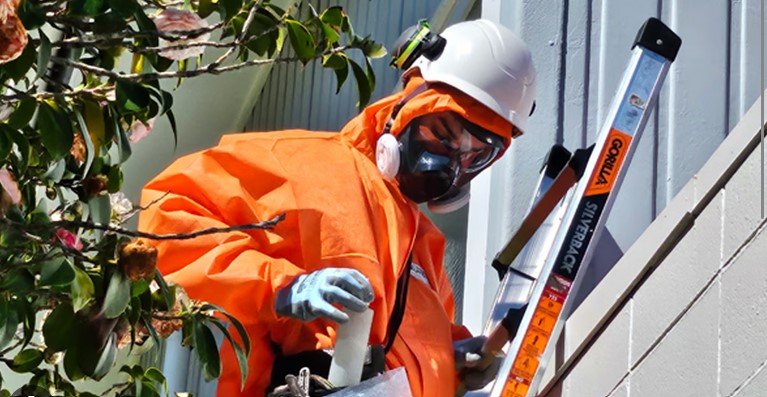Understanding the health effects of asbestos is crucial for protecting yourself and your loved ones from its risks. Asbestos, once widely used in construction and other industries, is now known to cause severe health issues when its fibers are inhaled. This guide will help you grasp the dangers of asbestos exposure and take the necessary steps to minimize its impact on your health.
What Is Asbestos and Why Is It Dangerous?
Asbestos is a naturally occurring mineral that was commonly used in building materials due to its heat resistance and durability. However, when asbestos-containing materials are disturbed, they release tiny fibers into the air. These fibers, when inhaled, can settle in the lungs and cause serious health problems over time.

Understanding How Asbestos Affects the Lungs
The health effects of asbestos primarily impact the respiratory system. When asbestos fibers are inhaled, they can become trapped in the lung tissue. Over time, this can lead to scarring, inflammation, and long-term damage. Conditions like asbestosis, a chronic lung disease, are common among those exposed to asbestos regularly.
The Link Between Asbestos and Cancer
One of the most severe health effects of asbestos is its connection to cancer. Asbestos exposure is a leading cause of mesothelioma, a rare but aggressive cancer that affects the lining of the lungs, abdomen, or heart. Additionally, asbestos exposure increases the risk of lung cancer, especially in individuals who smoke.
Who Is Most at Risk of Asbestos Exposure?
While anyone can be exposed to asbestos, certain groups face higher risks. These include construction workers, electricians, and shipbuilders who worked with asbestos-containing materials before its dangers were widely known. Family members of these workers can also be at risk if asbestos fibers were brought home on clothing or tools.
Signs and Symptoms of Asbestos-Related Illnesses
Understanding the early signs of asbestos-related illnesses can be life-saving. Symptoms may include persistent coughing, shortness of breath, chest pain, and fatigue. However, these symptoms often take decades to appear after exposure, making early detection challenging.
Steps to Minimize Asbestos Exposure
If you suspect asbestos in your home or workplace, avoid disturbing the materials. Hire a certified asbestos inspector to assess the area and take samples if necessary. Removing asbestos safely requires professional help, as improper handling can release fibers into the air.
How to Handle Asbestos in Older Homes
Many older homes still contain asbestos in insulation, flooring, and roofing materials. If you live in a home built before the 1980s, it’s essential to be cautious during renovations. Understanding the health effects of asbestos can help you decide whether removal or encapsulation is the best option for your situation.
Legal Protections Against Asbestos Exposure
Governments worldwide have implemented regulations to limit asbestos use and protect public health. In many countries, strict guidelines govern the handling, removal, and disposal of asbestos-containing materials. Knowing your rights can help you stay informed and protected.
Why Awareness Is Key to Prevention
Education is the first step in reducing the health risks of asbestos. By understanding the health effects of asbestos and sharing this knowledge, you can help others recognize potential dangers and take action to stay safe.
Conclusion
Understanding the health effects of asbestos is essential for safeguarding your health and that of your loved ones. From recognizing the risks to knowing how to manage asbestos safely, being informed can make all the difference. If you suspect exposure or find asbestos in your environment, consult professionals immediately. Remember, prevention and early action are the best tools for protecting yourself from asbestos-related illnesses.




